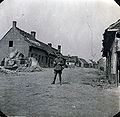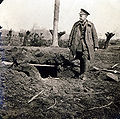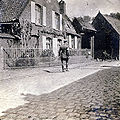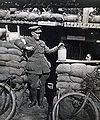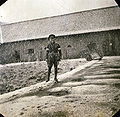Forde, Elroy
| Elroy Forde | |
|---|---|
| 10 September 1885 – 3 November 1953 | |
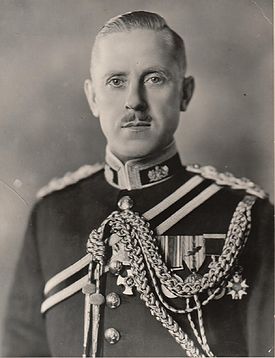 | |
| Place of birth | Dundas Ontario |
| Place of burial | Cataraqui Cemetery, Kingston |
| Allegiance | Canada |
| Service/branch | Canadian Army |
| Rank | Colonel |
| Awards | DSO, OBE, VD, MiD |
Contents
Service
As a young man, Elroy Forde enlisted in the 77th (Wentworth) Regiment. After six years in the ranks he was appointed a provisional lieutenant in the regiment. As he has some experience in civilian telegraphy he was asked by his Commanding Officer to form a signalling section for the unit. In 1909 was transferred to the Canadian Signal Corps which had recently been organized. Becoming a captain the following year, he was Command Signal Officer for Western Ontario and Divisional Signal Officer, 2nd Division, until the outbreak of the Great War in 1914.
Captain Forde went overseas in command of No. 4 Section, 1st Canadian Divisional Signal Company in which post he also acted as Brigade Signal Officer of the 3rd Canadian Infantry Brigade. In December 1915 he was promoted to Major and placed in command of 1st Canadian Divisional Signal Company. On 20 June 1917, upon promotion, Lieutenant-Colonel Forde became the Corps' first Chief Signal Officer (C.S.O.), an appointment which he held until the end of the war.[2] For his exemplary Great War service, Lt-Col Forde was awarded the Distinguished Service Order in 1916[3][4] (he was invested by the King at a ceremony at Buckingham Palace on 24 March 1917)[5] and made a Chevalier of the Legion d'Honneur in 1919[6][7] by the French Government. He was mentioned in dispatches in April 1916[8], April 1917[9] and in March 1919[10].
In the re-organized Permanent Force which followed the Great War, he was appointed Major and Brevet Lt-Colonel as Assistant Director of Signals at National Defence Headquarters on October 8th 1919. On 15 May 1925 he became a Lt-Col R.C. Signals, on 5 February 1930 a Colonel (Canadian Militia) and on 1 January 1933 a Colonel, R.C. Signals.
Appointed Director of Signals in January 1931 he moved his headquarters to Vimy Barracks in October 1937. In the Second World War he guided the build-up of the Corps to its unprecedented wartime strength as both Officer Administering the Royal Canadian Corps of Signals and Commandant of the Canadian Signal Training Centre. With the Corps well established Colonel Forde retired in the fall of 1942.
A high point in Col Forde's career occurred in 1935 when his dream of a permanent Signals Training Centre came true with the building of Vimy Barracks on the outskirts of Kingston Ontario.
Retirement Years
After retirement Col Forde made Kingston his home and was manager of the Forde (Insurance) Adjustment Service at 7 Montreal Street.
On January 9th 1943 in the ante-room of the Officers' Mess at Vimy Barracks, Brigadier P. Earnshaw unveiled a portrait of Col Forde, from the brush of Kenneth Forbes, who had been commissioned to execute this work by Col Forde's brother officers as a token of their appreciation of his leadership.
Colonel Forde was a founding member of the Kingston Division of the Canadian Corps of Commissionaires which was authorized on 26 March 1947. He served as the Division's first Chairman of the Board and became the Commandant of the Division.[11]
Colonel Forde died at the age of 68 on 3 November 1953. On 6 November, following a service in the foyer of the Forde Building he was buried in Cataraqui Cemetery Kingston.
What's in a name?
Earlier in his life, he spelled his surname "Ford". This is seen in earlier references including his attestation paper for service overseas with the Canadian Expeditionary Force where it was spelled without the 'e', by his own hand, in his name and his signature. An entry in his official service record dated 30 December 1918 states "The correct spelling of this Officers name is "FORDE" - all documents to be altered accordingly." It is not clear what led to this change of spelling.
Forde Lake
On the occasion of the Corps Diamond Jubilee in 1963, two lakes were named in honour of Canadian Signallers. "Forde Lake" at honours Col E. Forde, Chief Signal Officer of the Canadian Corps in the First World War and head of Corps until 1942. The second lake is "Carruthers Lake".
Related Pages
Related Items
References
- ↑ Biographical Sketch Col Elroy Forde, OBE, DSO, VD, Directorate of Signals, 20 Aug 1953.
- ↑ History of the Royal Canadian Corps of Signals 1903-1961, John S. Moir (editor).
- ↑ The London Gazette, Supplement 29608. 2 June 1916. Page 5570.
- ↑ The London Gazette, Supplement 29729. 29 August 1916. Page 8577.
- ↑ National Archives WO 390/3/3 Page 111.
- ↑ The London Gazette, Supplement 31688. 12 December 1919. Page 15578.
- ↑ The London Gazette, Supplement 31812. 5 March 1920. Page 2875.
- ↑ The London Gazette, Supplement 32655. 28 March 1922. Page 2583.
- ↑ The London Gazette, Supplement 30107. 1 June 1917. Page 5426.
- ↑ The London Gazette, Supplement 31448. 8 July 1919. Page 8817.
- ↑ The Commissionaires: An Organization with a Proud History. John Gardam (editor). General Store Publishing House, 1998. ISBN 1-896182-88-7. Page 283-4.











